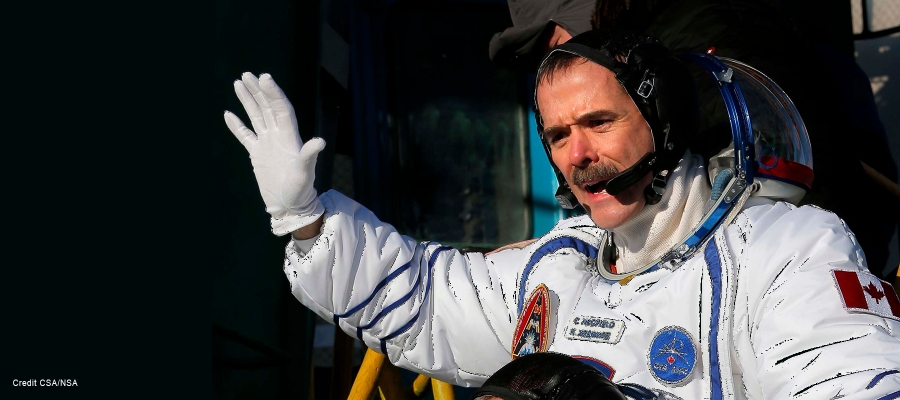This story is so HUGE that we broke it into 2 parts - so make sure you also check out "Space Food Part 2 - Chris Hadfield, Dr. Louisa Preston, Chris Patil". You will learn about everything from how one eats in zero gravity to how someone could survive all by themselves on a barren planet.
Two of our interviewees have books out in stores right now. Famed astronaut, Chris Hadfield, has 2 books out: "An Astronaut’s Guide to Life on Earth” and “You Are Here: Around the World in 92 Minutes”. And author Andy Weir wrote the book “The Martian” which I’m sure most of you have heard of...well at least I'm sure you've heard of the movie adaptation starring Matt Damon.
Astronauts have breakfast, lunch, and dinner - similar to how we do it on Earth - running on a 24 hour cycle. As Commander Hadfield explained: on Earth, we sleep through the night when it's dark, and then we "break" our "fast" in the morning by eating "breakfast". Then when you're hungry again a few hours later, you eat lunch. Then when you're done work for the day, you eat dinner. So that pattern of eating is not driven by our bodies, it's driven by the schedule of night and day on Earth. Unlike Earth, which has night and day every 24 hours, the International Space Station has night and day every 92 minutes. It would be too much to have breakfast, lunch, and dinner every 92 minutes, so astronauts simply keep the Earth schedule. The astronauts on the International Space Station are extremely busy. They tend to eat breakfast together, then eat lunch individually, then eat dinner together.
Now if they weren't on the space station, but were instead traveling to Mars, then it would be light out all the time. Of course, people haven't been to Mars...yet. But we sure have thought about what it might be like. Author Andy Weir's book "The Martian" was about what it would be like to be stranded on Mars - how would one make food or water? We asked Andy Weir how he came up with a way for the protagonist, Mark Watney, to stay alive with limited resources. Basically, the book started as a thought experiment. Spoiler alert, here's how Mark Watney survived: Mark Watney used martian soil, mixed with the little bit of Earth soil that he had with him. Earth soil was important for basically infecting martian soil with Earth bacteria. Mark grew potatoes in his little plot of soil. Why potatoes? Well potatoes have a high calorie-to-area yield, and the author knew that his protagonist didn't have a lot of space to work with. Andy Weir also considered having the protagonist grow peas, but there was no way that the protagonist could have grown enough peas to get enough calories to survive.
To hear more from each of our interviewees, listen to the episode! Since this story was so heavy on quotes, it's a good one for listening to.
Special Thanks to Our Interviewees:
Chris Hadfield
Andy Weir

